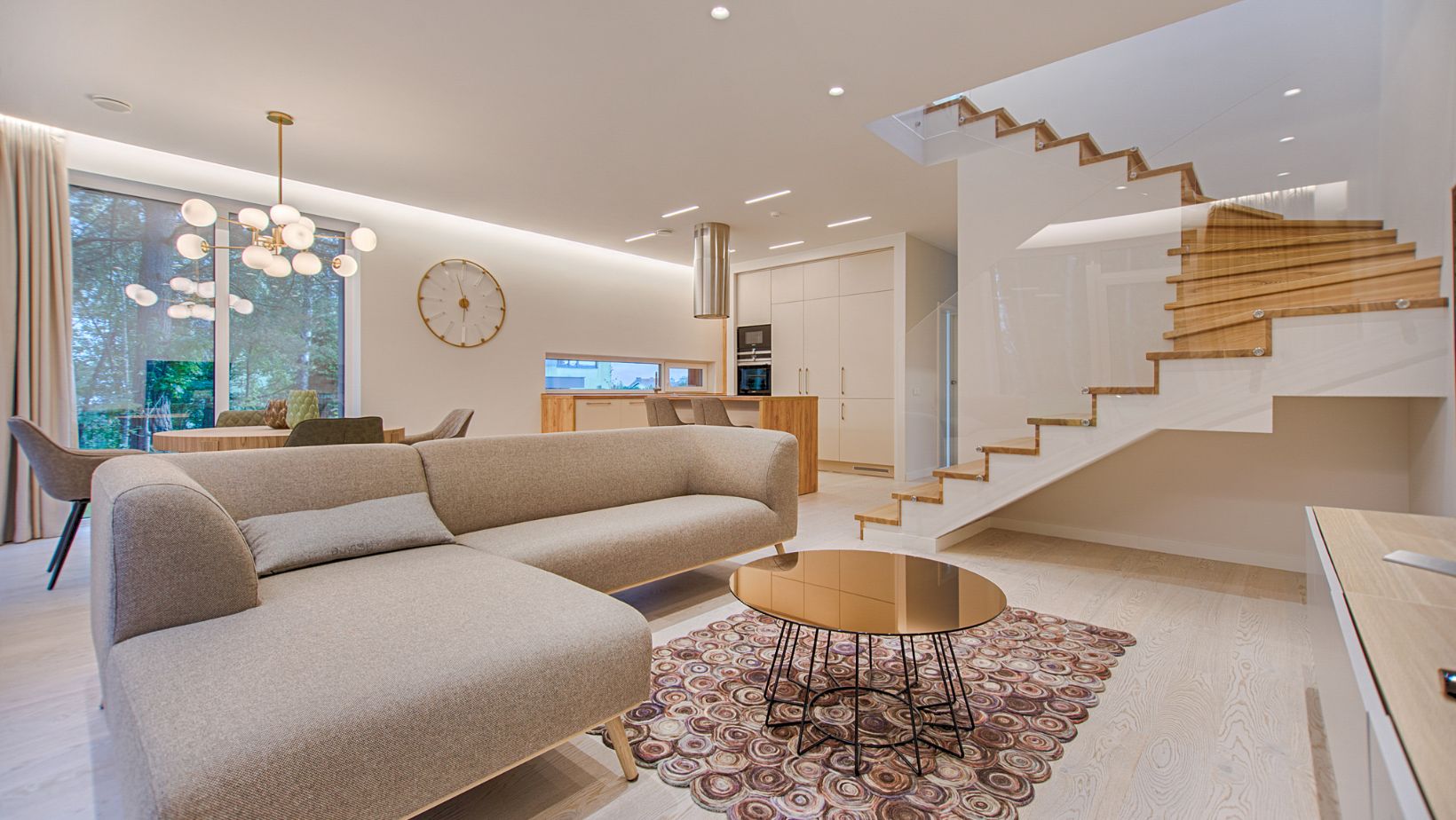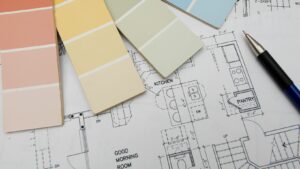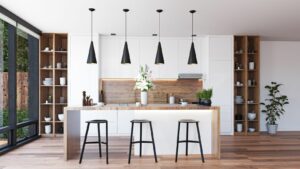 Interior design is more than just arranging furniture and picking paint colors; it’s about creating spaces that resonate with personality and functionality. Understanding the fundamental principles of interior design can transform any environment into a harmonious and inviting place. Whether it’s a cozy home or a sleek office, the right design choices can enhance both aesthetics and utility.
Interior design is more than just arranging furniture and picking paint colors; it’s about creating spaces that resonate with personality and functionality. Understanding the fundamental principles of interior design can transform any environment into a harmonious and inviting place. Whether it’s a cozy home or a sleek office, the right design choices can enhance both aesthetics and utility.
By grasping key concepts like balance, proportion, and harmony, anyone can elevate their spaces. These essentials serve as the backbone of effective design, guiding decisions that lead to visually pleasing and practical environments. Embracing these fundamentals empowers individuals to express their unique style while ensuring comfort and purpose in every room.
Key Takeaways
- Understanding Fundamentals: Interior design fundamentals like balance, proportion, harmony, and functionality are essential for creating inviting and practical spaces.
- Balance Types: Achieve visual stability through symmetrical balance (mirroring elements) and asymmetrical balance (dissimilar items that equalize visual weight).
- Color Theory: Utilize the color wheel for effective color schemes—monochromatic, analogous, complementary, and triadic—to create cohesive and inviting atmospheres.
- Space Planning: Maximize functionality by zoning areas, optimizing furniture layout, and ensuring clear circulation paths to enhance user experience.
- Texture and Material: Mix natural and synthetic materials, and incorporate textural contrast to enhance visual appeal and tactile experience in interior design.
- Lighting Importance: Layer different types of lighting—ambient, task, accent, and natural—to create mood and functionality, ensuring well-distributed illumination across spaces.
Interior Design Fundamentals
Understanding the interior design fundamentals plays a crucial role in creating functional and aesthetically pleasing spaces. Key principles include:
- Balance: Balance distributes visual weight across a room. It can be symmetrical, with identical elements on each side, or asymmetrical, using different objects to achieve an equivalent effect.
- Proportion: Proportion relates to the size and scale of furniture and decor in relation to each other and the space. Accurate proportion ensures that items fit well together, creating a cohesive look.
- Harmony: Harmony ties together various elements within a space, promoting a unified and pleasant atmosphere. This unity often comes from consistent colors, styles, and textures.
- Contrast: Contrast emphasizes differences, which adds interest and depth. Using varying colors, shapes, and materials can create a dynamic environment that captures attention.
- Rhythm: Rhythm establishes visual movement through repetition of elements such as colors, shapes, or patterns. It guides the eye around a space, fostering flow and continuity.
- Focal Point: A focal point draws attention and anchors a room. It could be a piece of artwork, furniture, or an architectural feature that provides a visual centerpiece.
- Functionality: Functionality ensures that a space serves its intended purpose efficiently. It encompasses layout, furniture placement, and accessibility, integral for comfort and usability.
Grasping these interior design fundamentals helps individuals cultivate spaces that reflect their personality while enhancing usability and aesthetic appeal.
Key Principles Of Interior Design
Understanding key principles of interior design enhances both functionality and aesthetics of a space. Essential concepts include balance, harmony, and scale and proportion.
Balance
 Balance creates a visually stable environment. Achieving balance involves two main types: symmetrical and asymmetrical.
Balance creates a visually stable environment. Achieving balance involves two main types: symmetrical and asymmetrical.
- Symmetrical Balance: This involves mirroring items on either side of a central point. For example, a pair of identical sofas flanking a fireplace establishes symmetry, providing a sense of order.
- Asymmetrical Balance: This utilizes differing items that, while dissimilar, equalize visual weight. An oversized chair balanced by a small side table and lamp exemplifies asymmetry, promoting dynamic interest.
Harmony
Harmony ensures every design element works together cohesively. Achieving harmony incorporates the following aspects:
- Color Palette: Using complementary or analogous colors creates a unified look. For instance, a muted color scheme can establish a calming atmosphere.
- Materials and Textures: Mixing textures, like soft fabrics with sleek metals, fosters visual interest while maintaining a cohesive feel.
- Scale: Refers to the size of an object in relation to its surroundings. A large chandelier in a spacious dining room enhances grandeur, while a small lamp can be lost in expansive areas.
- Proportion: Involves the relationship between different elements in a space. Selecting furniture with harmonious proportions to the room size, such as lower sofas in a compact living area, creates a balanced atmosphere.
Color Theory In Interior Design
Color theory plays a crucial role in interior design, influencing mood, atmosphere, and perception of space. Understanding how colors interact transforms environments into cohesive and inviting areas.
Color Wheel
The color wheel serves as a foundational tool in interior design. It visually represents colors in a circular format, showcasing primary, secondary, and tertiary hues.
- Primary Colors: Red, blue, and yellow. These colors cannot be created by mixing others.
- Secondary Colors: Green, orange, and purple. These colors result from mixing primary colors.
- Tertiary Colors: Combinations of primary and secondary colors, leading to hues like red-orange and blue-green.
Designers use the color wheel to identify complementary colors, which sit opposite each other, enhancing visual appeal and balance. For instance, pairing blue with orange creates vibrant contrast, often used in modern decor.
Color Schemes
Color schemes define the relationship between colors used in design. Utilizing effective schemes enhances harmony and balance within a space.
- Monochromatic: Variations of one hue, creating a serene and streamlined look.
- Analogous: Colors that are next to each other on the color wheel, producing a harmonious feel. For example, blue, blue-green, and green offer subtle transition.
- Complementary: Contrasting colors that provide energy and visual interest. Examples include red and green or yellow and purple.
- Triadic: Combines three evenly spaced colors on the color wheel, promoting a vibrant palette while maintaining equilibrium.
Choosing an appropriate color scheme allows designers to create atmospheres that align with the function and intended mood of a space. For instance, warm colors often evoke energy, while cool colors enhance tranquility, impacting how occupants perceive and interact within the environment.
Space Planning Techniques
Effective space planning techniques maximize the functionality and aesthetic appeal of interior environments. By considering the arrangement of elements within a space, designers can promote efficiency and enhance user experience.
Functionality
 Functionality focuses on how spaces serve their intended purposes. Every element must be purposeful, from furniture placement to circulation pathways. Key considerations include:
Functionality focuses on how spaces serve their intended purposes. Every element must be purposeful, from furniture placement to circulation pathways. Key considerations include:
- Zoning: Assign specific areas for various activities, such as lounging, eating, or working. Clear delineation aids in organization and ensures that each zone serves its function.
- Furniture Layout: Position furniture to facilitate movement and social interaction. Using appropriate distances between pieces enhances comfort and accessibility.
- Storage Solutions: Incorporate functional storage options to reduce clutter. Use built-in shelves, cabinets, or multi-functional furniture to optimize space utility.
- Circulation Paths: Design clear pathways that connect different areas within a space. Aim for unobstructed routes that accommodate foot traffic.
- Visual Connections: Maintain open sightlines to create an airy feel. Strategically placing furniture and decor encourages an unobtrusive flow between spaces.
- Transitions: Use transitions to guide movement between areas. Varying flooring materials or wall colors can effectively signal changes in zones while maintaining cohesion.
Texture And Material Selection
Texture and material selection significantly impacts interior design, contributing to both aesthetic appeal and tactile experience. Choosing the right materials fosters a harmonious environment while enhancing functionality.
Natural Vs. Synthetic Materials
Natural materials, such as wood, stone, and cotton, offer unique textures and organic aesthetics. They often bring warmth and authenticity to spaces while providing durability and sustainability. For instance, reclaimed wood adds character and history, while natural stone exudes elegance and strength.
Synthetic materials, including plastics and engineered fabrics, provide versatility and can imitate natural textures. These options often stand up to wear and tear, making them suitable for high-traffic areas. For example, high-performance upholstery mimics the look of leather while being resistant to stains, promoting easy maintenance.
Optimal design integrates both natural and synthetic materials, creating depth and interest while meeting practical needs.
Textural Contrast
Textural contrast plays a vital role in enhancing visual dynamics within a space. By combining various textures, designers can create layers that engage the senses. For example, pairing a smooth leather sofa with a chunky knit throw introduces tactile variance, adding richness to the interior.
Combining soft, plush elements with harder surfaces generates balance and intrigue. A rustic wooden table surrounded by sleek metal chairs exemplifies this technique, highlighting both the beauty of the materials and the functionality of the space.
Incorporating diverse textures invites interaction and fosters a more inviting atmosphere. Careful consideration of textural contrast enhances overall design, contributing to a well-rounded, visually appealing environment.
Lighting Essentials In Interior Design
Lighting plays a crucial role in interior design, creating mood and enhancing the functionality of spaces. Understanding various types of lighting and their strategic placement can significantly impact overall design effectiveness.
Types Of Lighting
- Ambient Lighting
Ambient lighting serves as the primary source of illumination in a space. It establishes a comfortable level of brightness, allowing occupants to navigate and function within the environment. Examples of ambient lighting include ceiling-mounted fixtures, chandeliers, and wall sconces. - Task Lighting
Task lighting provides focused illumination for specific activities, enhancing functionality in areas like kitchens and workspaces. Examples of task lighting include under-cabinet lights, desk lamps, and bedside reading lamps. - Accent Lighting
Accent lighting highlights specific features or areas within a room, such as artwork or architectural elements. Examples of accent lighting include spotlights, track lighting, and wall-mounted picture lights. - Natural Lighting
Natural lighting utilizes sunlight to enhance the beauty of interiors. It adds warmth and depth while reducing reliance on artificial sources. Examples of maximizing natural lighting include large windows, skylights, and open floor plans.
- Layered Lighting
Layering different types of lighting creates depth and dimension within a space. It’s vital to combine ambient, task, and accent lighting to achieve balanced illumination. - Focal Points
Placing lighting to emphasize focal points draws attention to unique aspects of a design. Position accent lights above artwork or architectural features to create visual interest. - Height Considerations
Positioning light fixtures at appropriate heights ensures effective illumination. For example, hanging pendant lights about 30 inches above countertops enhances task visibility. - Room Functionality
Tailoring lighting to the room’s purpose enhances usability. Task lighting is essential in kitchens and work areas, while softer ambient lighting suits relaxation spaces like living rooms. - Balanced Distribution
Distributing light evenly across surfaces minimizes shadows and dark areas. Consider using multiple light sources in various locations to maintain an inviting atmosphere.
Designing Personal Space
Mastering the fundamentals of interior design empowers individuals to create spaces that resonate with their personal style while serving practical needs. By understanding principles like balance, harmony, and proportion, anyone can transform their environment into a cohesive and inviting haven.
Integrating color theory, effective space planning, and thoughtful material selection enhances both aesthetic appeal and functionality. Additionally, the strategic use of lighting can significantly elevate the atmosphere of any room.
Embracing these core concepts not only enriches the visual experience but also fosters comfort and usability, making every space a true reflection of its inhabitants.